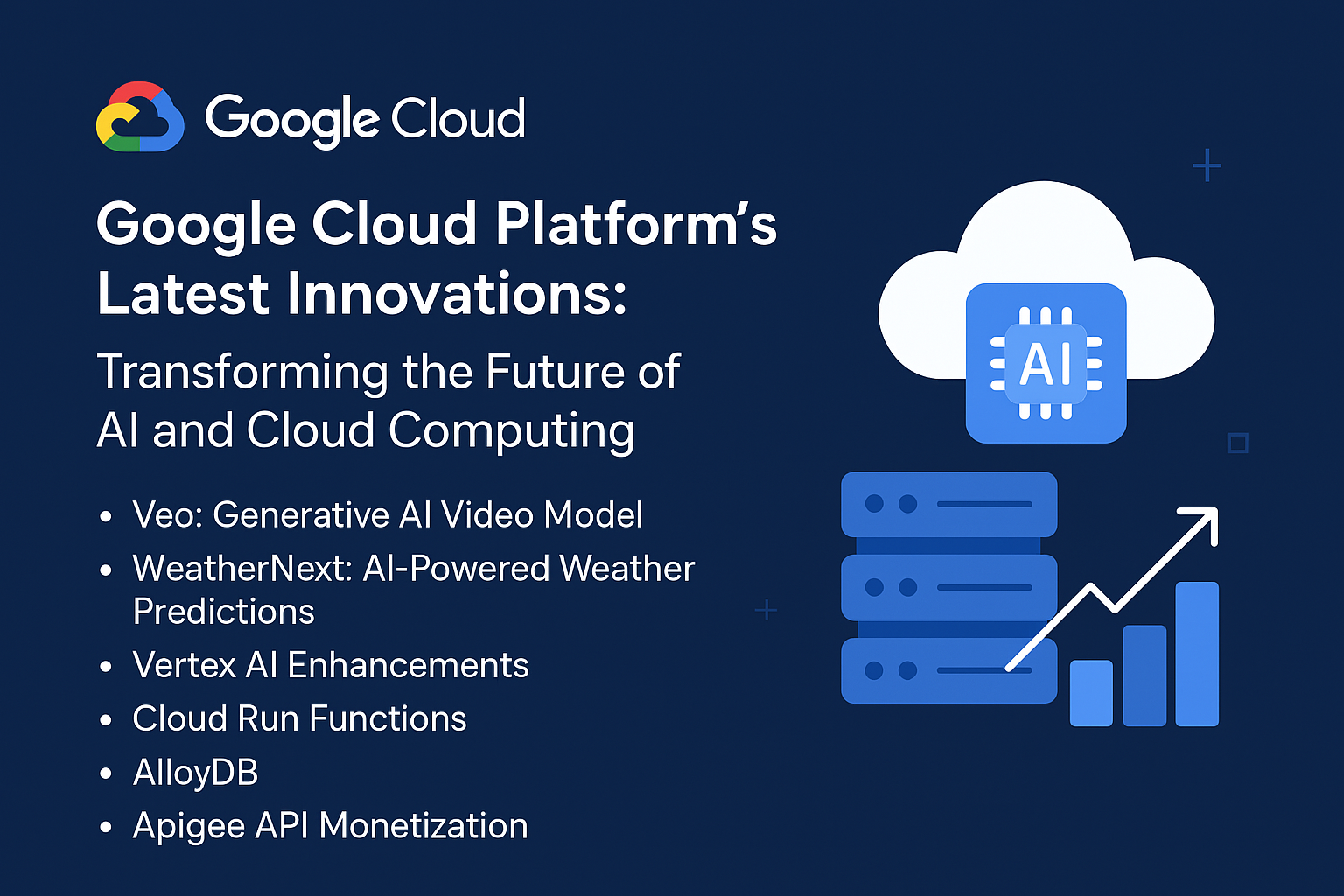
Predictions for AI and Cloud Security Threat Landscape
citadelcloud
As we journey further into the digital age, the fusion of Artificial Intelligence (AI) and cloud computing is revolutionizing the way businesses operate. While these advancements bring unprecedented efficiencies and capabilities, they also introduce a new set of security challenges. Understanding the evolving threat landscape is crucial for organizations to safeguard their digital assets and maintain trust with their stakeholders.
The Current State of AI and Cloud Security
AI and cloud computing have become integral to modern business operations. Cloud platforms offer scalable, flexible, and cost-effective solutions, while AI enhances data analytics, automates processes, and drives decision-making. However, these technologies also present attractive targets for cybercriminals.
AI in Cybersecurity: Double-Edged Sword
AI is a powerful tool in cybersecurity, capable of detecting anomalies, predicting threats, and automating responses. Yet, it can also be weaponized by malicious actors. AI-driven attacks, such as deepfakes, AI-powered malware, and automated phishing campaigns, are becoming increasingly sophisticated.
Cloud Computing: Expanding Attack Surface
The cloud’s distributed nature and extensive data storage capabilities make it a prime target for attacks. Misconfigurations, inadequate access controls, and the shared responsibility model often lead to vulnerabilities. As organizations migrate more services to the cloud, the attack surface expands, increasing the potential for breaches.
Predicted Trends in AI and Cloud Security Threats
The future landscape of AI and cloud security will be shaped by both the advancements in technology and the evolving tactics of cyber adversaries. Here are key trends to watch:
1. AI-Enhanced Attacks
AI-enhanced attacks will become more prevalent. Cybercriminals will leverage AI to develop more sophisticated malware that can adapt and evade traditional security measures. AI-driven social engineering attacks, such as highly personalized phishing emails, will increase in frequency and effectiveness.
2. Advanced Persistent Threats (APTs)
APTs, which involve prolonged and targeted attacks by well-funded adversaries, will continue to evolve. These attackers will use AI to enhance their reconnaissance, exploit vulnerabilities, and remain undetected for longer periods. AI will enable APTs to automate the discovery of weaknesses and optimize their attack strategies.
3. Ransomware as a Service (RaaS)
The RaaS model, where cybercriminals sell or lease ransomware tools to others, will become more sophisticated with AI. AI will be used to automate the delivery, propagation, and customization of ransomware attacks. This will lower the barrier to entry for aspiring cybercriminals and increase the overall volume of attacks.
4. Cloud Misconfigurations and Exposures
Cloud misconfigurations will remain a significant security risk. As organizations continue to adopt multi-cloud and hybrid cloud environments, managing configurations will become more complex. AI can help detect and rectify misconfigurations, but improper implementation and oversight will still lead to vulnerabilities.
5. Supply Chain Attacks
Supply chain attacks, where attackers infiltrate software vendors or service providers to compromise end-users, will grow in frequency. AI can be used both to perpetrate these attacks and to defend against them. Organizations will need to enhance their supply chain security practices and leverage AI to monitor for anomalies.
6. Privacy and Data Protection
As regulations around data privacy and protection become stricter, organizations will need to invest in AI-driven solutions to ensure compliance. AI will be used to identify and protect sensitive data, but attackers will also use AI to bypass privacy controls and access valuable information.
7. Automated Incident Response
AI-driven incident response will become a standard practice. AI will enable faster detection, analysis, and mitigation of security incidents. However, reliance on AI without human oversight could lead to blind spots and potential exploitation by attackers.
Strategies to Mitigate AI and Cloud Security Threats
While the threat landscape is evolving, organizations can take proactive measures to enhance their security posture. Here are key strategies:
1. AI-Powered Security Solutions
Invest in AI-powered security tools that can detect and respond to threats in real-time. These solutions should be capable of analyzing vast amounts of data, identifying patterns, and adapting to new threats.
2. Comprehensive Cloud Security Policies
Develop and enforce comprehensive cloud security policies. This includes regular audits, proper access controls, and continuous monitoring of cloud environments. Utilize AI to automate compliance checks and identify potential risks.
3. Employee Training and Awareness
Educate employees about the latest threats and best practices for cybersecurity. AI-driven social engineering attacks are often successful due to human error. Regular training and awareness programs can help mitigate this risk.
4. Enhanced Incident Response Plans
Create and regularly update incident response plans that incorporate AI-driven tools. Ensure that these plans are tested and that staff are trained to respond effectively to incidents.
5. Third-Party Risk Management
Implement robust third-party risk management practices. This includes vetting vendors, continuously monitoring their security practices, and using AI to identify anomalies in their behavior.
6. Continuous Monitoring and Threat Intelligence
Leverage AI to continuously monitor networks, systems, and applications for suspicious activity. Integrate threat intelligence feeds to stay informed about the latest threats and vulnerabilities.
Conclusion
The integration of AI and cloud computing offers immense benefits but also introduces complex security challenges. By understanding the evolving threat landscape and implementing proactive security measures, organizations can protect their digital assets and maintain trust with their stakeholders. The future of AI and cloud security will require a combination of advanced technology, human expertise, and a commitment to continuous improvement.
FAQs on AI and Cloud Security Threat Landscape
1. What are AI-enhanced attacks?
AI-enhanced attacks leverage artificial intelligence to create more sophisticated and effective cyberattacks. Examples include AI-driven malware that can adapt to evade detection and highly personalized phishing attacks that are more likely to deceive victims.
2. How do cloud misconfigurations occur?
Cloud misconfigurations typically occur due to human error, lack of knowledge, or oversight. Common issues include leaving storage buckets publicly accessible, improper access controls, and failing to apply security patches.
3. What is Ransomware as a Service (RaaS)?
Ransomware as a Service (RaaS) is a model where cybercriminals sell or lease ransomware tools to other attackers. This lowers the barrier to entry for cybercriminals and increases the overall volume of ransomware attacks.
4. How can AI help with incident response?
AI can help with incident response by automating the detection, analysis, and mitigation of security incidents. AI-driven tools can quickly identify patterns, predict potential threats, and respond to incidents faster than traditional methods.
5. Why are supply chain attacks increasing?
Supply chain attacks are increasing because they allow attackers to compromise multiple organizations by infiltrating a single vendor or service provider. These attacks can be difficult to detect and mitigate, making them attractive to cybercriminals.
6. How can organizations protect against AI-driven social engineering attacks?
Organizations can protect against AI-driven social engineering attacks by implementing robust security awareness training programs, using multi-factor authentication, and employing AI-driven tools to detect and block phishing attempts.
7. What role does continuous monitoring play in cloud security?
Continuous monitoring is crucial in cloud security as it helps detect and respond to threats in real-time. AI-driven monitoring tools can analyze large volumes of data, identify anomalies, and provide actionable insights to security teams.
Table of Contents
Latest Articles

